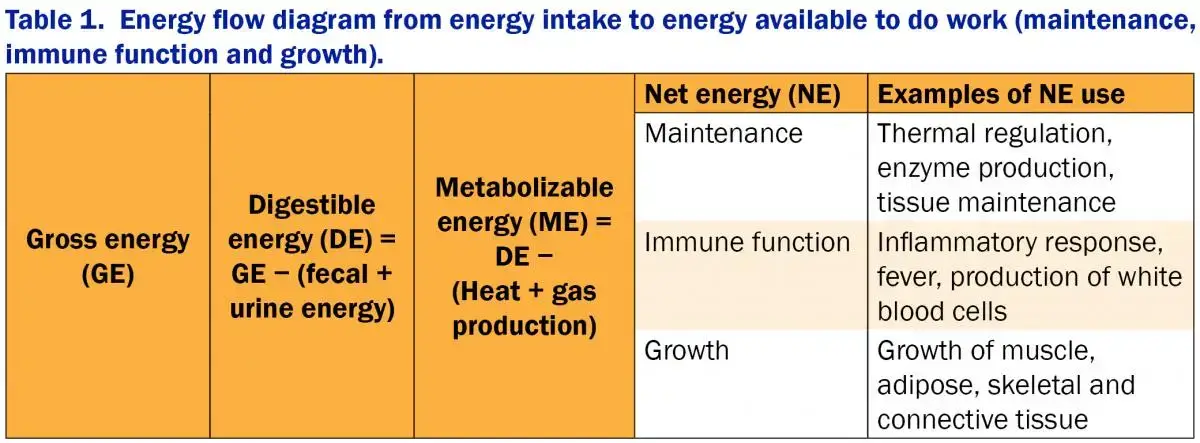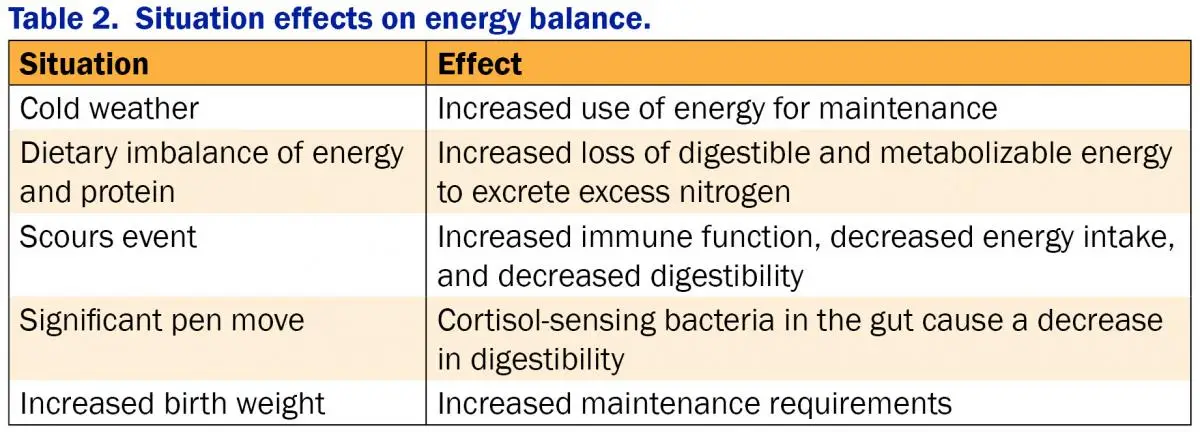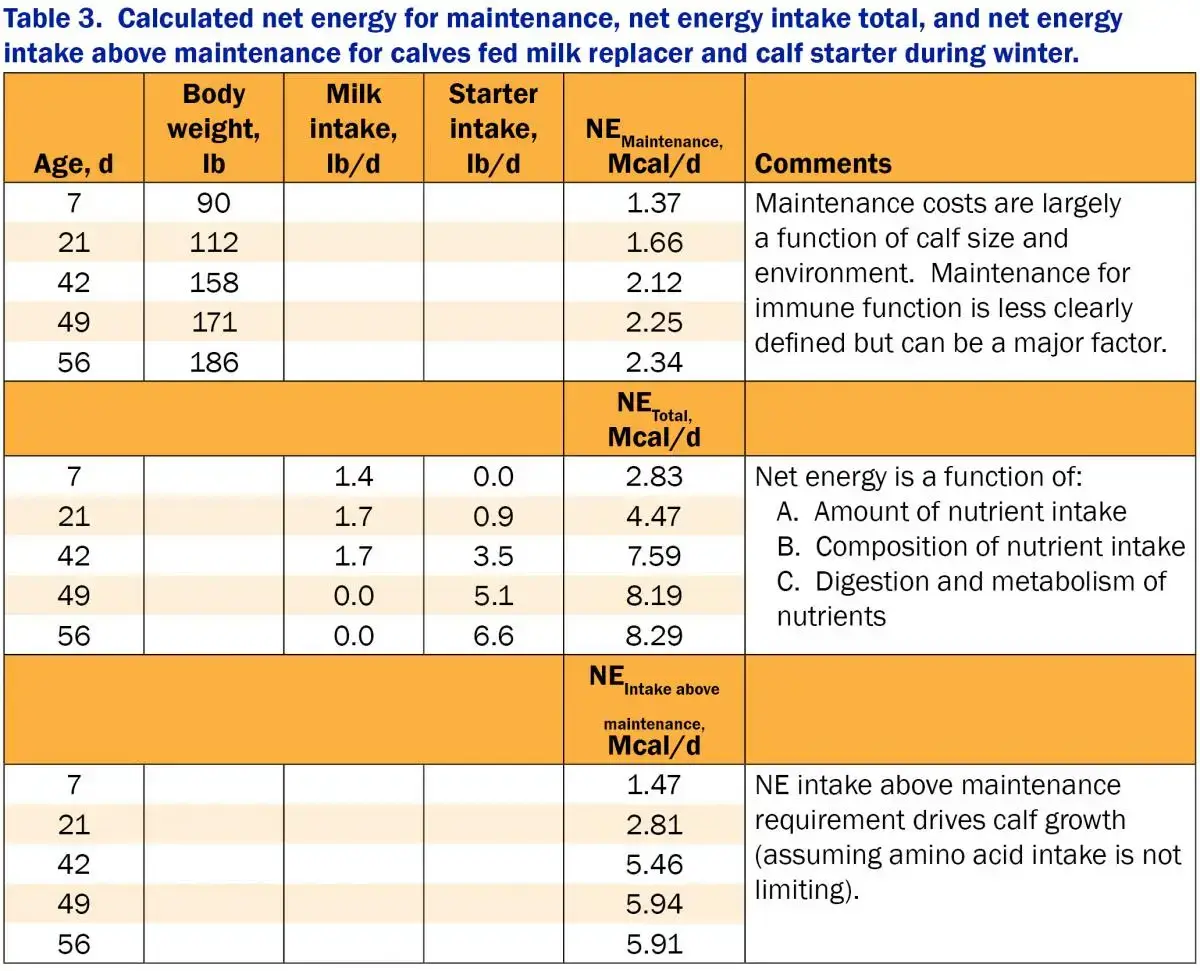
Drive Calf Growth with Energy Balance – Dr. Noah Litherland, Vita Plus
 By Dr. Noah Litherland, Vita Plus dairy youngstock technical specialist
By Dr. Noah Litherland, Vita Plus dairy youngstock technical specialistEnergy balance is defined as the net effect of energy intake and energy use. Positive energy balance allows for growth, while negative energy balance requires calves to use fat reserves, and even muscle, to meet the energy deficit. Weight gain and loss are direct reflections of energy balance.
How is energy available to the calf measured?
Energy is measured in individual feeds using calorimetry, where feeds are oxidized (burned) and the resultant heat produced is measured. This measured value is known as gross energy. Net energy available to the calf for maintenance, immune function, and growth is derived from predictive equations to correct for digestible and metabolizable energy from protein, fat, and carbohydrates (Table 1). Net energy for maintenance is used to regulate body temperature, produce necessary enzymes for metabolism, and maintain tissues, such as the gastrointestinal (GI) tract. The maintenance energy requirement is the effect of the animal’s age, size, stage of production, genetic potential, and interaction with the environment.
Immune function is part of maintenance, but, for this article, I have isolated it to drive home the point that calf health (for better or worse) has a significant impact on energy partitioning. When a calf is sick, immune function will dominate net energy usage, which decreases available energy for maintenance and growth.
Although it is difficult to measure, we can see the effects of a shift in net energy available to the calf, as Table 2 describes. These changes in net energy balance can be seen in body condition and growth of the calves. Are they gaining or losing weight?
Net energy for maintenance, total net energy intake (from milk replacer and starter grain), and net energy intake above maintenance are calculated for a group of calves in Table 3. You can see how the maintenance requirement for energy nearly doubles from day seven to day 56. This is a function of both body size and environmental temperature.
Total net energy for the calf increases from 2.8 Mcal at seven days, to 8.3 Mcal at 56 days. This energy supply comes from both milk and starter. The amount of dry matter (DM) from either milk or starter is the primary driver of energy intake. DM intake increases nearly five-fold from day seven to day 56. Net energy intake remaining after covering maintenance costs is the energy available for the calf to use to power protein synthesis.
Notice how energy available for growth starts to plateau – and even decreases – from days 49 to 56. These calves will need to continue to ramp up starter grain intake to support energy required to keep pace with growth rate.
| Category: |
Animal health Calf and heifer nutrition Starting Strong - Calf Care |




